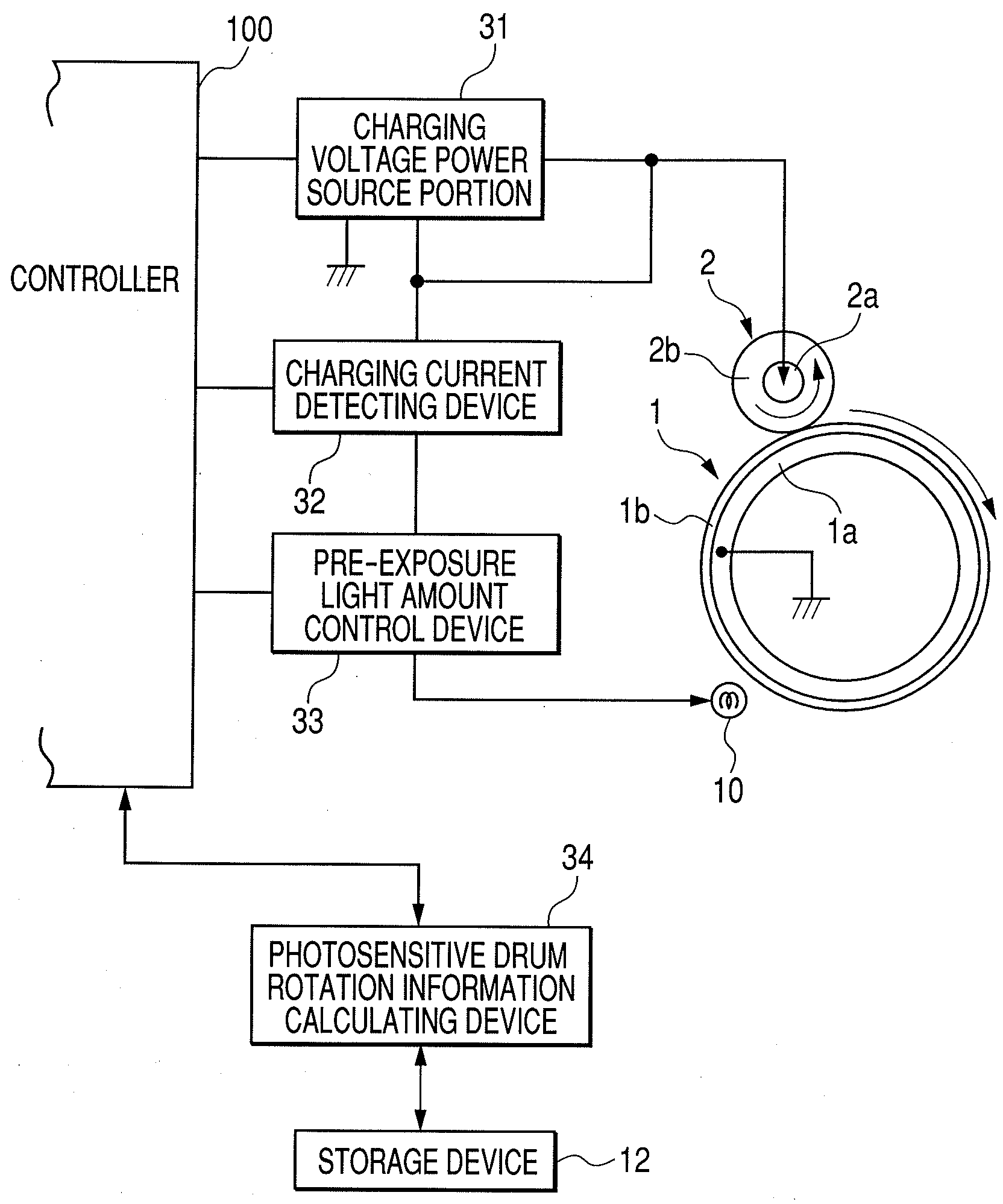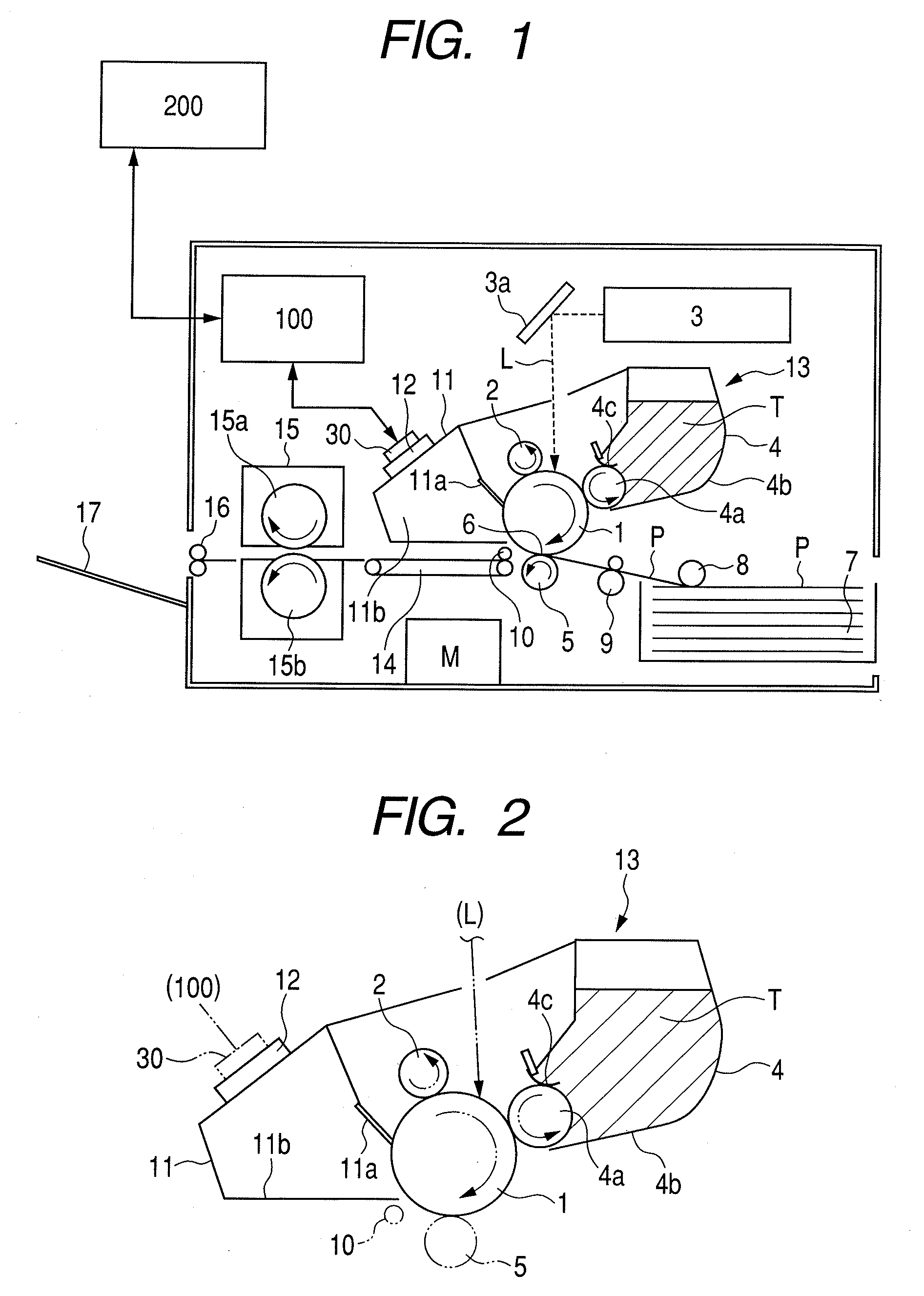Image forming apparatus
- Summary
- Abstract
- Description
- Claims
- Application Information
AI Technical Summary
Benefits of technology
Problems solved by technology
Method used
Image
Examples
first embodiment
[0033](1) Image Forming Portion
[0034]FIG. 1 is a schematic structural view of an image forming apparatus according to a first embodiment of the present invention. The image forming apparatus is an electrophotographic laser beam printer, and, a series of electrophotographic processes, i.e., charge, exposure, development, transfer, and cleaning are carried out with regard to an electrophotographic photosensitive member of a rotating drum type (hereinafter, referred to as photosensitive drum) 1 as an image bearing member to form an image on a recording material P.
[0035]A controller (engine controller: control circuit portion) 100 carries out system control of the whole image forming apparatus. The controller 100 executes image forming operation based on a print signal which is input from an external host device 200 such as a personal computer, an image reader, or a facsimile machine of the other party. A central processing unit (CPU, not shown) is provided in the controller 100. A seri...
second embodiment
[0091]In the first embodiment of the present invention, the slope α(n) of the charging current when the pre-exposure light amount is changed, that is, the rate of change of the amount of the charging current is used to determine the pre-exposure light amount. However, in the present embodiment, the determination is made using the value of the charging current as it is when the pre-exposure is changed. Similar to the case of the first embodiment of the present invention, during a time period when no image is formed, direct current voltage is applied to the charging roller 2 by the charging voltage applying device to charge the photosensitive drum. Then, exposure is carried out with the exposure light amount of the pre-exposure device for the charged photosensitive drum being changed in a plurality of steps, and regions exposed with the different exposure light amounts are formed on the photosensitive drum. Then, the regions of the photosensitive drum exposed with the different exposu...
third embodiment
[0101]In the second embodiment of the present invention, the value of the charging current as it is when the pre-exposure is changed is used to make the determination, and it is described that the value of Ic(X) has to be changed depending on the film thickness of the photosensitive drum to be used. The second embodiment of the present invention has no problem when the film thickness of the photosensitive drum does not become thinner as the printing proceeds, and when, even if the film thickness becomes thinner, the influence is not so significant and it is not necessary to take the film thickness into consideration. However, when the photosensitive drum is gradually shaved off and the film thickness becomes thinner, and the influence is significant, an appropriate exposure light amount may not be obtained with an apparatus where the film thickness of a photosensitive drum thereof has to be taken into consideration. Therefore, in the present embodiment, the pre-exposure light amount...
PUM
 Login to View More
Login to View More Abstract
Description
Claims
Application Information
 Login to View More
Login to View More - R&D
- Intellectual Property
- Life Sciences
- Materials
- Tech Scout
- Unparalleled Data Quality
- Higher Quality Content
- 60% Fewer Hallucinations
Browse by: Latest US Patents, China's latest patents, Technical Efficacy Thesaurus, Application Domain, Technology Topic, Popular Technical Reports.
© 2025 PatSnap. All rights reserved.Legal|Privacy policy|Modern Slavery Act Transparency Statement|Sitemap|About US| Contact US: help@patsnap.com



